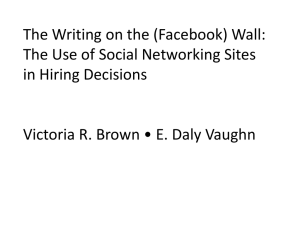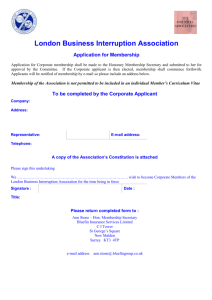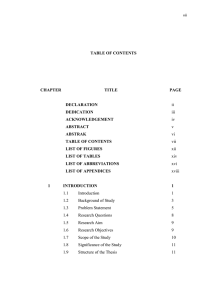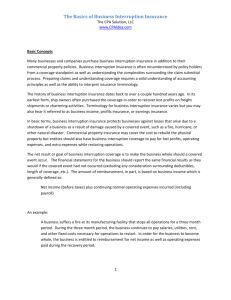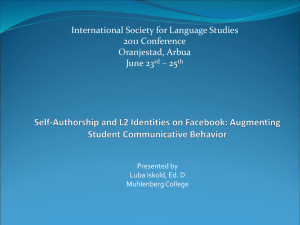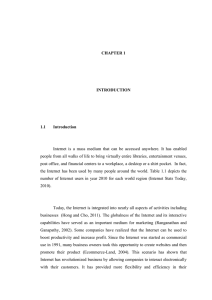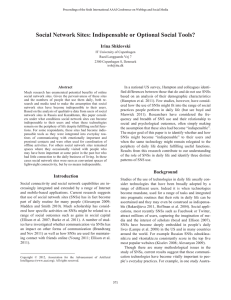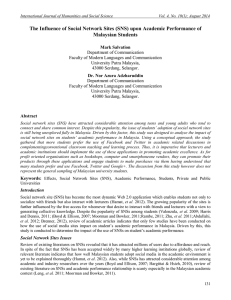Presentation slides
advertisement
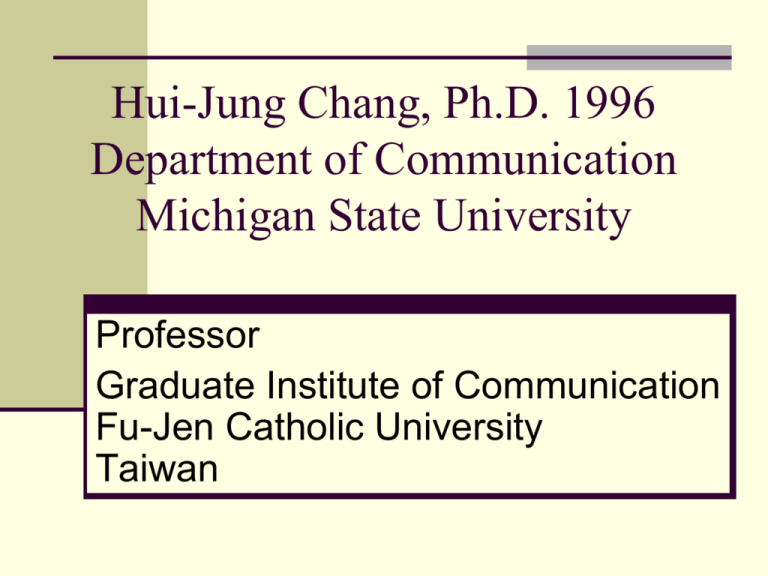
Hui-Jung Chang, Ph.D. 1996 Department of Communication Michigan State University Professor Graduate Institute of Communication Fu-Jen Catholic University Taiwan Social networking sites and interruption in organizational settings: A media uses perspective outline Introduction Literature Review Methods Results Discussion Introduction The uses of new communication technology has always been a challenge to communication within an organization. “embedded, pervasive, & interconnected; they ARE wherever we are” interrupt one another, or delay progress on tasks impede social networking sites (SNSs) Definition public or semi-public profile publicly display friends list view and traverse their list of connections effects on the workplace connecting people and building relations across boundaries of geography and discipline increase the possibility of interruptions in a person’s work Goal of the paper SNSs uses a higher level of interruption “The effects of communication technologies are determined by the way they are used” ( Fulk et al., 1990). Goal of the paper Why and How SNSs are used in the workplace? Why-why people use SNSs? How- for what purposes? Literature Review -Theories of media uses Media characteristics models Social presence Media richness Social influence models jointly constructed by co-workers in the workplace Media characteristics models Social presence Physical presence (1976) “the degree of salience of the other person in the interaction” psychological involvement (2003) Media richness “a medium’s capacity to process equivocal and uncertain information” instant feedback, multiple cues, natural language, convey emotion Ftf > telephone > email> letter high social presence, rich + equivocal & uncertain tasks Media characteristics models and SNSs Ftf > IM> email Ftf> SNS>email SNSs are high in social presence and media richness organizational members consider richer media such as SNSs better than traditional media to obtain assimilation-related information (Waldeck, Seibold & Flanagin,2009) . Theories of media uses -The social influence model “the social context,…, can affect beliefs about the nature of jobs and work, about what attitudes are appropriate...” mostly by the attitudes, statements and behaviors of co-workers (including supervisors) The social influence model and SNSs workers are expected to be logged on IM whenever they are physically present at the firm (Quan-Hasse, Cothrel & Wellman, 2005) . social influence accounts for electronic multitasking behavior in organizational meetings (Stephens & Davis, 2009) How SNS are used-6 purposes Caring the personal satisfaction of connecting socially at work Climbing the benefit of promoting and connecting strategically for career advancement Campaigning gather support for their projects from Dimicco et al. (2008) How SNS are used-6 purposes organization of work preparing and announcing meetings, checking availability activities of knowledge work information sharing, problem solving, document transfers Socializing conversations not related to work from Cho et al. (2005) Literature Review -Interruption and SNS uses “a synchronous interaction which is not initiated by the recipient, is unscheduled, and results in the recipient discontinuing their current activity” (O’Conail & Frohlich’s,1995, p. 262)- intrusive IM is interruptive SNSs, (IM, message boards, videos, games) might be a greater source of interruption Four types of Interruption (Jett & George, 2003) Intrusive : unexpected intrusions Breaks anticipated or self-initiated time away from performing work Distractions affect a person’s cognitive processes so that he or she can not focus on primary work Discrepancies perceives inconsistencies between one’s knowledge and expectations and what is happening in the external environment Negative consequences of SNS uses wasting time slandering co-workers or customers SNS addiction lower employee productivity Research questions RQ 1. Are the three media use theories (social presence, media richness, and social influence) related to the level of perceived interruptions in the workplace? RQ 2. Which theory of media use is most strongly related to the level of perceived interruption? RQ 3. Are different purposes for using SNSs (organization of work, knowledge exchange, socialization, caring, climbing, and campaigning) associated with different levels of interruption in the workplace? RQ4. Among the three media-use theories and the six purposes, which variable is most strongly related to the level of perceived interruption? Methods Facebook Via convenience and snowball sampling of computer-using workers in Taiwan, 12/2010~2/2011. graduate students->to their acquaintances an online survey N = 116 51.4%male 48.3% female Measurement Facebook use. the Facebook intensity scale (Ellison, Steinfield & Lampe, 2007) 241 friends 60% spent less than 1 hour per day 81.0% interact with friends and families Measurement Social presence Copresence Social richness Involvement warm, sensitive, personal, social self-involvement partner-involvement Social attraction From Biocca et al., (2003) Measurement Media richness instant feedback multiple cues natural language convey emotion (Liu & Ku, 1997) Social influence Supervisor Co-workers (Liu & Ku, 1997; Schmitz & Fulk, 1991) Interruption Intrusion Breaks Distraction Inconsistency Results RQ 1 social (b =social .41, ppresence, < .001) The higherpresence they rated media media experienced richness (b = .38, p <influence .001) richness, social from co-worker and(b supervisors, the higher level of co-workers = .34, p < .001) interruption. supervisors (b = .43, p < .001) RQ 2 supervisors (b = .35, p < .001) The more one is influenced by supervisor, perceived partner involvement (b = .28, p the greater one perceives partner < .05) involvement, the higher level of interruption. Results RQ3 The purposes of using FB is not related to None the perceived level of interruption. RQ4 supervisors (b = .35, The best predictor to p < .001) the perceived level of perceived partner involvement (b = .28, interruption is supervisor, followed by p < .05) involvement, organization of work. partner organization of work (b = -.20, p < .05) Discussion Social influence works better Supervisor are a major influence media characteristics models perceived partner involvement –>elicit personal emotions->interruption people use FB mainly for leisure purposes Breaks 80% of the respondents interact with their friends and families Management nightmare FI, interruption (r = .44, p<.001) permit employees to use SNSs for breaks but regulate the amount of time organization of work, interruption “invocation of script” (Sætre et al., 2007) for routine work, the use of script that has been stored in out mind process automatically Limitations external validity respondents are not representative enough to stand for all computer-using workers in Taiwan the results specific to a cultural context Thank you!
